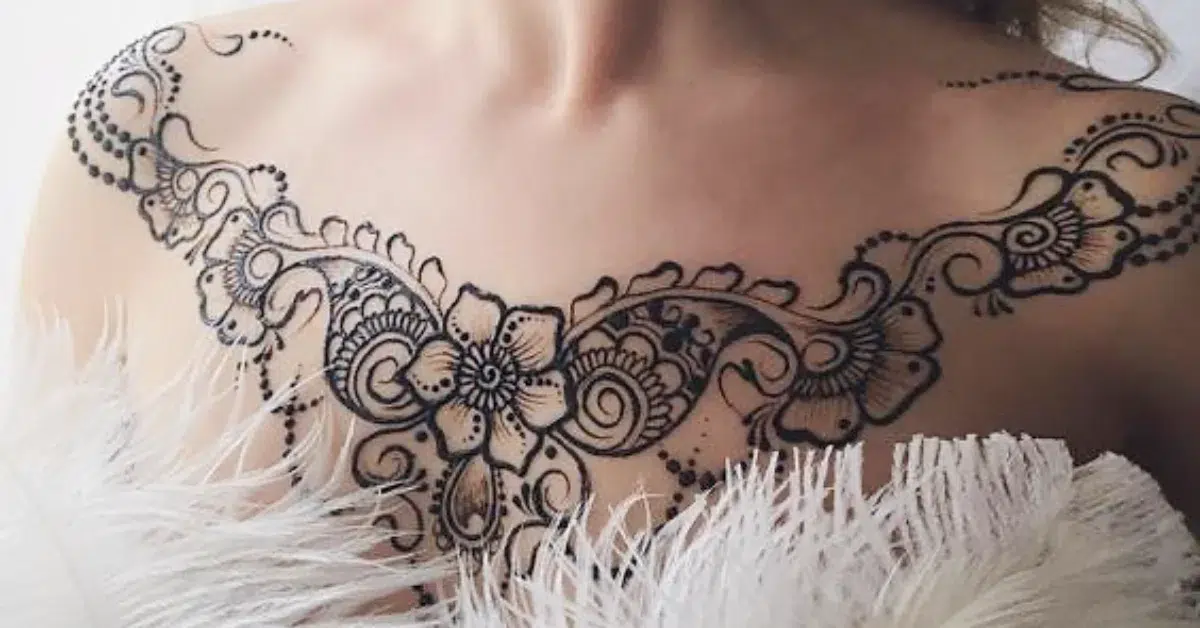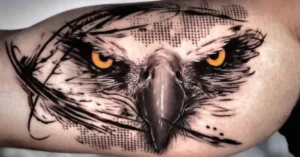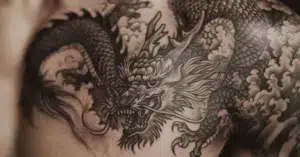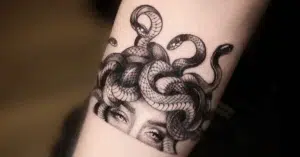People around the globe generally recognize henna tattoos for their intricate designs and cultural significance. These tattoos are an ancient form of art that employs a natural dye from the Lawsonia Inermis plant.
These henna tattoos are far beyond merely temporary adornment. They represent rich traditions because they symbolize beauty, joy, and spiritual well-being across various cultures, including complicated bridal mehndi in India, bold Moroccan patterns, and more.
Henna tattoos can beautifully tell stories of heritage and celebration. That ignited the idea of writing about them in our post today. What we tend to follow below is our exploration of the history, cultural significance, application techniques, popular designs, modern adaptations, and health concerns of henna tattoos.
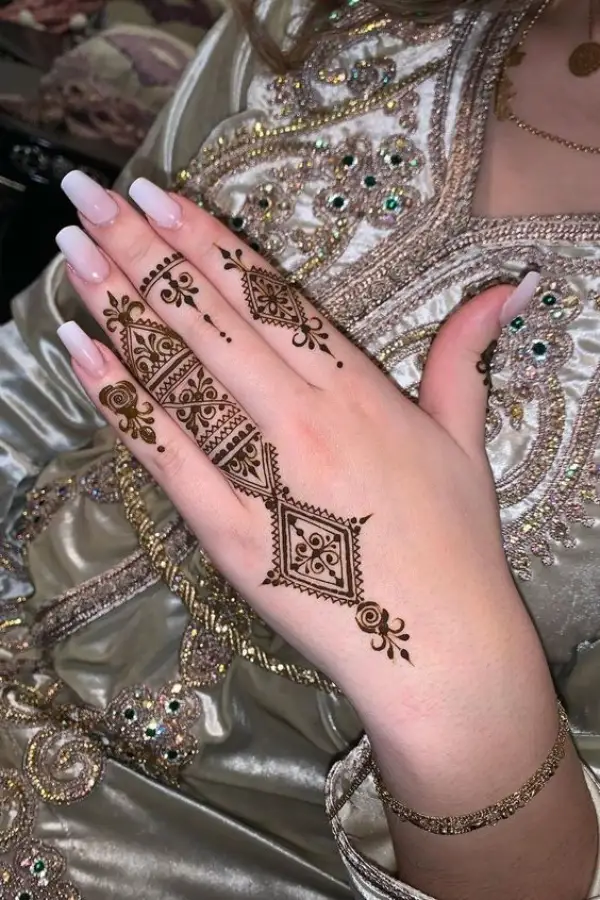
Credit to @ɴɪʟᴜ ʟɪᴍʀᴀ | Pinterest
The Rich History of Henna
The plant Lawsonia Inermis is the source of henna. It has a rich history that covers thousands of years and many civilizations.
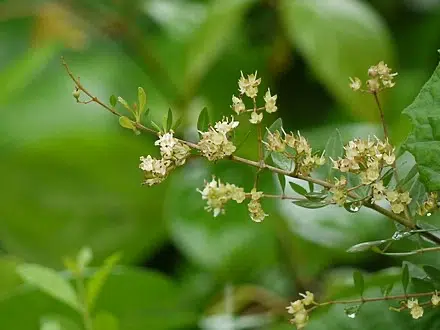
Source: https://en.wikipedia.org/wiki/Lawsonia_inermis
- Ancient Egypt: Initially, Egyptians used henna for cosmetic and medicinal purposes. Egyptians used it to dye their hair and nails. Also, in burial practices, they used henna to dye the hair and nails of mummies as they believed this practice could shield the deceased in the afterlife.
- Middle East and Indian Subcontinent: The use of henna then expanded to the Middle East and the Indian subcontinent. In ancient India, people employed henna for its dyeing properties and cooling effect. They believed henna could lower the body temperature when on the skin. This dual functionality boosted the popularity of henna in Indian society.
- North Africa and the Arabian Peninsula: Consequently, henna found its way to North Africa and the Arabian Peninsula. The cultural exchanges in these routes blended and diversified henna traditions. People began to employ henna in more complicated body art, especially for celebrations and rites of passage.
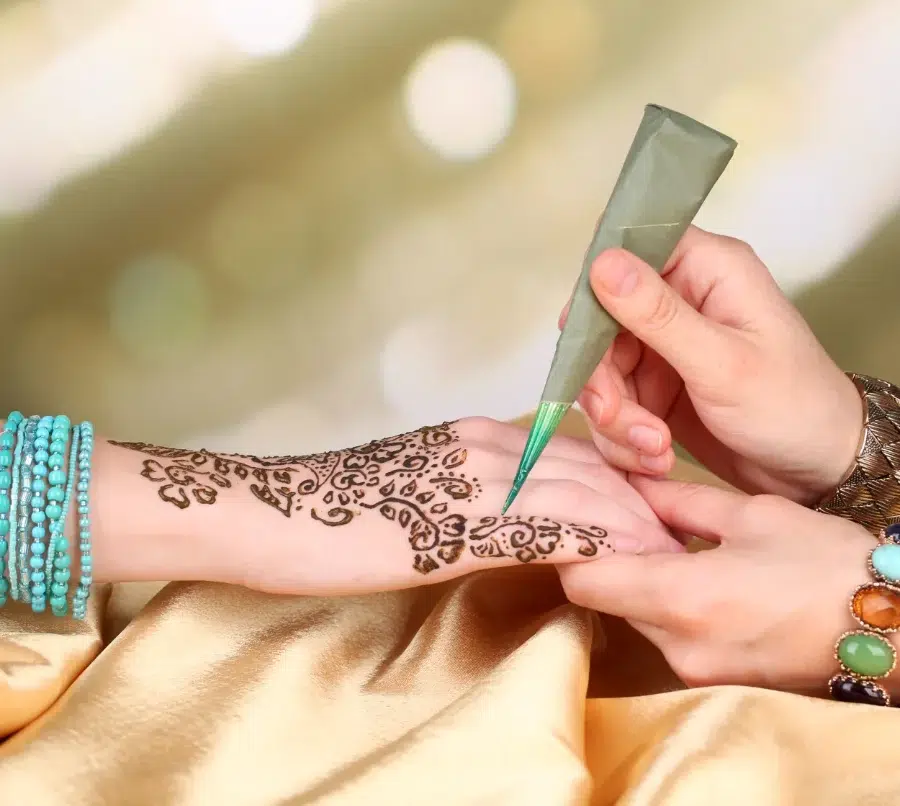
Source: https://www.shutterstock.com/blog/india/need-know-ancient-indian-art-henna
The usage of henna in these areas was not solely for adornment; it founded deep connections with cultural and religious practices. This fact shows that beyond aesthetics, henna had an undeniable role in rituals, social customs, protection, and prosperity. Today, people honor and preserve henna in modern practices, and it still is a cultural logo of beauty and tradition.
Cultural Significance of Henna
Henna is significantly profound in many cultures and societies. It generally symbolizes joy, beauty, and spiritual well-being.
In India, people widely use henna—or mehndi—in weddings in the shape of intricate designs on the brides’ hands and feet. However, it’s not just for adornment; people believe that henna’s color depth signifies the strength of the bond between the bride and groom. Furthermore, the application process is accompanied by singing, dancing, and festive gatherings.

Source: https://en.wikipedia.org/wiki/Mehndi
In Middle Eastern cultures, people use henna in weddings and other substantial life events. The Night of the Henna—similar to a bridal shower—is a pre-wedding celebration where people use henna to adorn the bride, and sometimes the groom. This event implies fertility, beauty, and protection against evil spirits. Patterns in these regions contain geometric shapes and floral motifs with distinctive meanings and blessings.
North African cultures—especially Morocco—also celebrate with henna. In addition to weddings, they apply henna during religious festivals such as Eid and life transitions like childbirth. Henna designs in these regions are generally bold to mirror the local artistic classes and cultural narratives.
Beyond its ceremonial applications, henna is a medium for personal expression and identity. In countless cultures, the henna design can show signs of social status, marital status, and even political affiliations. The application process is also a communal activity that strengthens social bonds and transfers cultural heritage among generations.
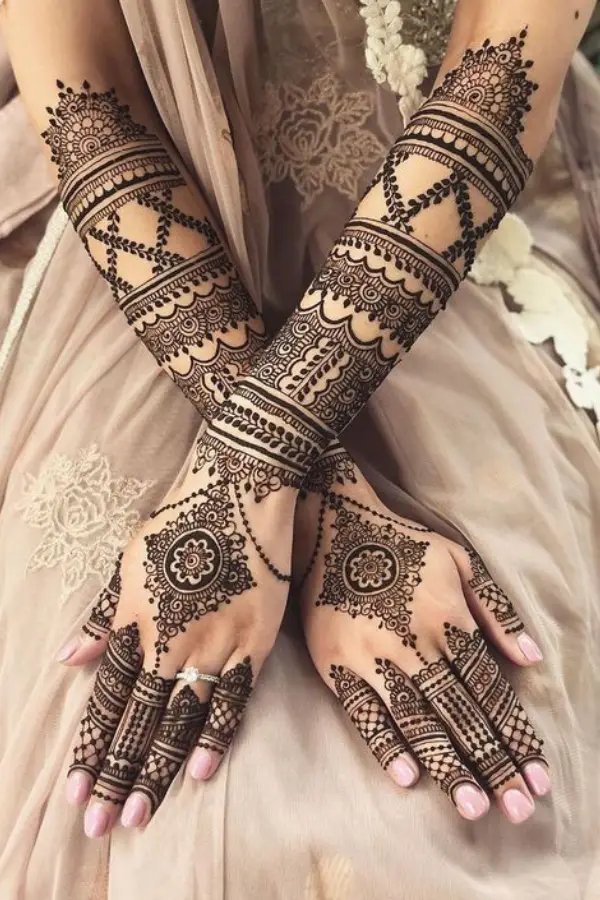
Source: https://www.pinterest.com/pin/165296248815607367/
The Art of Henna Application
Henna application is a painstaking process that blends tradition, skill, and creativity. It starts with the henna paste preparation. The paste comes from the dried and powdered leaves of the Lawsonia Inermis plant. The powder is mixed with diverse ingredients such as lemon juice, tea, and essential oils to enhance its dyeing properties. Then, the mixture is left for several hours to release the dye.
When the paste is ready, the artist transfers it into applicators—commonly cones or syringes—where they can precisely control it for meticulous designs. They use various techniques to apply the paste, including freehand drawing and employing stencils for more complex patterns. The designs are versatile and can comprise traditional motifs and contemporary geometric shapes.
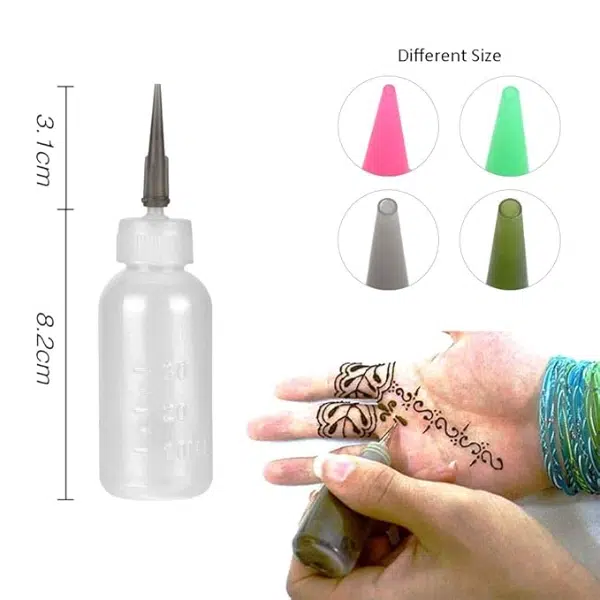
Application is a gradual and deliberate process. It usually takes several hours for elaborate designs. The artist must have steady hands and a keen eye for detail to apply patterns symmetrically.
After applying the henna, it should dry. This process can take half an hour to several hours, which depends on the design complexity and environmental conditions. In the meantime, the artist periodically applies a lemon sugar solution to moisturize the henna and enhance the stain’s longevity.
After the paste dries, the artist gently scrapes it off. It reveals a primary orange stain that darkens to a deep reddish-brown over the next two days. Then, appropriate aftercare is critical to ensure that henna survives as long as possible. This phase includes keeping the area dry and avoiding exfoliation.
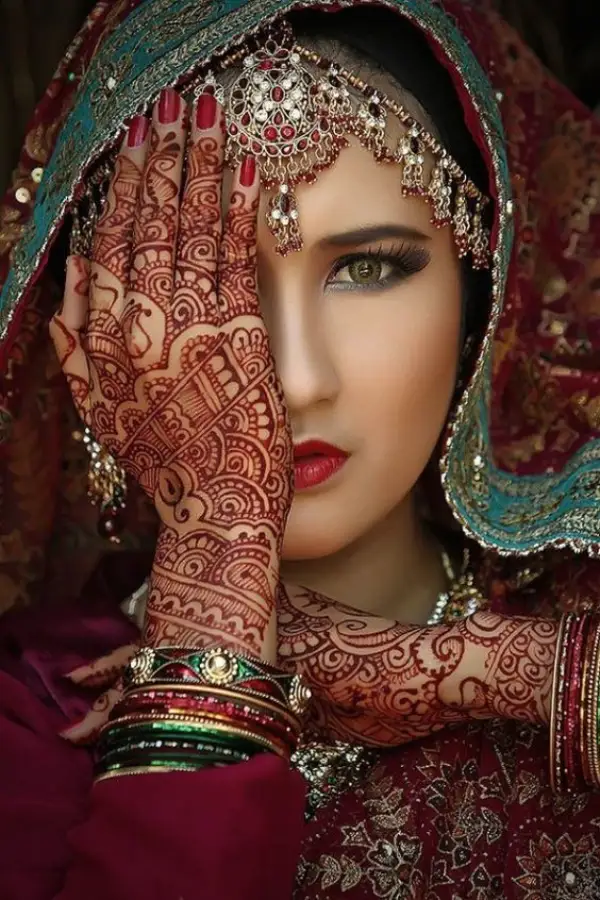
Credit to @Cristina Tobon | Pinterest
Popular Henna Tattoo Designs and Patterns
Henna designs and patterns are hugely distinctive across cultures. Each style depicts one-of-a-kind artistic elements and cultural meanings.
- Traditional Indian Designs: People know these designs for their complexity and detail. They often come with decorated paisleys, floral patterns, and intricate latticework. These designs generally cover hands/feet and may extend to arms/legs in bridal henna applications. The complex essence of these patterns signifies the intricate and careful approach to life’s journey.
- Middle Eastern Henna Art: This is where designs are mostly less thick but still intricate. They often come with geometric shapes, delicate vines, and flowers. The spacing between these patterns is generally wider to generate a remarkable and elegant appearance. The motifs in these designs convey specific messages such as protection, fertility, and blessings.
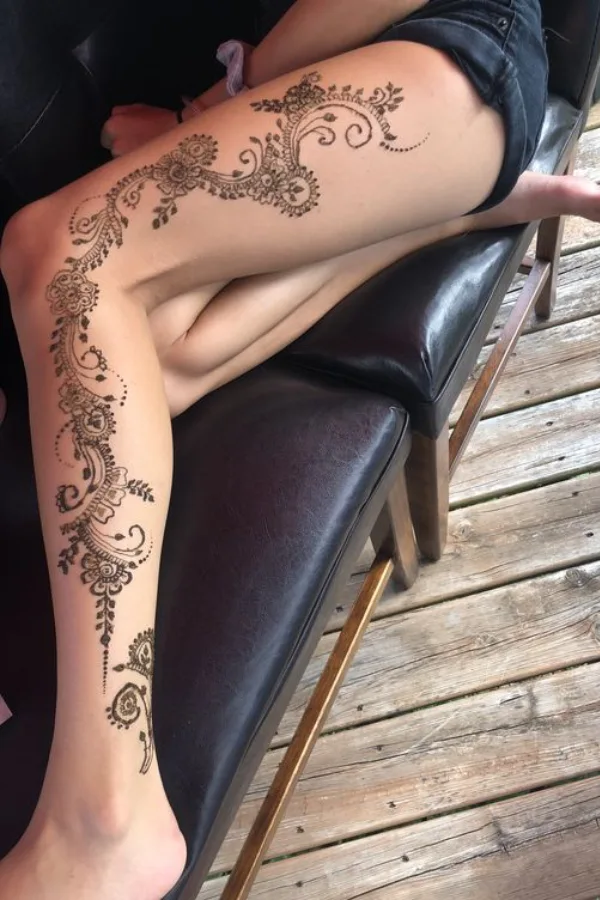
Credit to @Anmol Patel | Pinterest
- North African Henna: These designs, especially from Morocco, are bold and graphic. They mostly contain distinguished shapes and lines to craft a unique, easily recognizable look. Moroccan henna patterns generally employ symbols of protection and good fortune.
- Modern Henna Designs: These designs are far beyond traditional motifs. They employ contemporary trends and personal expression. Minimalist designs with simple geometric shapes, lines, and dots deliver a sleek/modern aesthetic. Also, some artists blend elements from other art forms, such as mandalas from yoga culture or even pop culture references, to craft a mixture of traditional and modern styles.

Credit to @Wahibabaksh | Pinterest
Customization is a notable trend in henna art today. Artists usually mix these designs to offer a personalized delivery. They might blend initials, significant dates, or motifs to convey a personal meaning.
Henna Tattoos in Modern Times
In modern times, people have gradually converted henna into a popular shape of body art. Countless cultures have accepted this ancient practice and broadly use henna in myriad social and cultural events, including music festivals, fashion shows, and corporate events.
The critical interest in henna lies in its temporary essence because it lets you embellish your body with complex designs without the permanence of traditional tattoos. The fashion and beauty industry has popularized henna significantly. Temporary henna tattoos are now a stylish accessory.
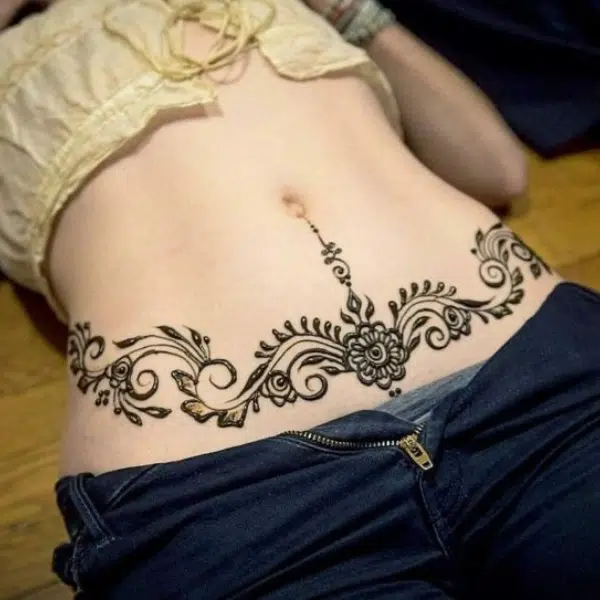
Credit to @Julia looez | Pinterest
The visibility of henna in widespread media has also boosted its general acceptance. Fashion designers today greatly employ henna-inspired patterns in their clothing and accessory lines to depict their versatility and aesthetic appeal.
Today, henna is an indispensable component of festivals and cultural fairs where artists set up booths to create designs for attendees. These events come with platforms for artists to present their skills so the audience can experience the beauty of henna. Plus, the rise of social media has empowered henna artists to share their henna art with a global audience.
The DIY henna trend has also thrived. Henna kits and instructional videos are vastly available online. This accessibility helps fans experiment with henna at home. However, this trend also shows the importance of using natural henna and safe application practices to prevent unfavorable reactions.
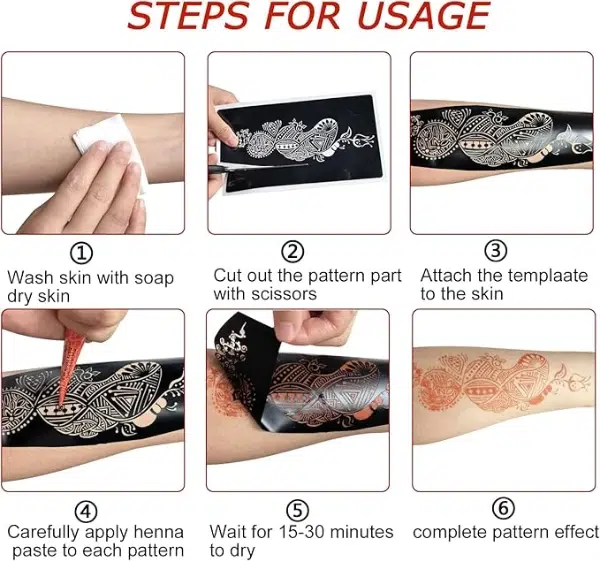
Henna Tattoos Safety Considerations
Henna-related health and safety considerations are critical to enjoying a positive and safe experience. Here are some more crucial concerns in this regard:
- Natural vs. Black Henna: Try to apply natural henna (reddish-brown), not black henna, with para-phenylenediamine (PPD). Black henna may cause unbearable allergic reactions, including redness, itching, blistering, and scarring.
- Choosing the Right Artist: Work with reputable artists who use high-quality, natural henna. Make sure they practice good hygiene and use sterile applicators.
- Patch Test: Always perform a patch test if you have sensitive skin or allergy worries to prevent unfavorable reactions.
- DIY Henna: Try to purchase henna from dependable sources and stick to proper preparation guidelines before you apply henna to large areas.
- Tattoo Aftercare: Keep the paste on for several hours without exposing it to water. Also, moisturize it with natural oils to boost the stain’s longevity and keep your skin safe.
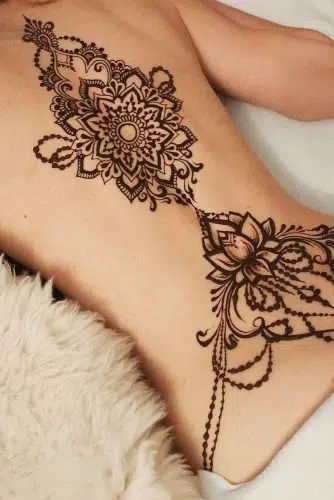
Credit to @Claire Gibbs | Pinterest
Final Words
Henna tattoos boast a rich history and cultural significance. They present a one-of-a-kind mixture of tradition and artistry. As a matter of fact, henna is a cherished blend of expression and beauty from its ancient origins to its modern applications.
Now that you understand the diverse designs, application techniques, and health considerations of henna tattoos, you can safely enjoy wearing this timeless work of art. Regardless of your purpose for wearing this tattoo, it can surely connect you to a world of cultural heritage and creativity.
